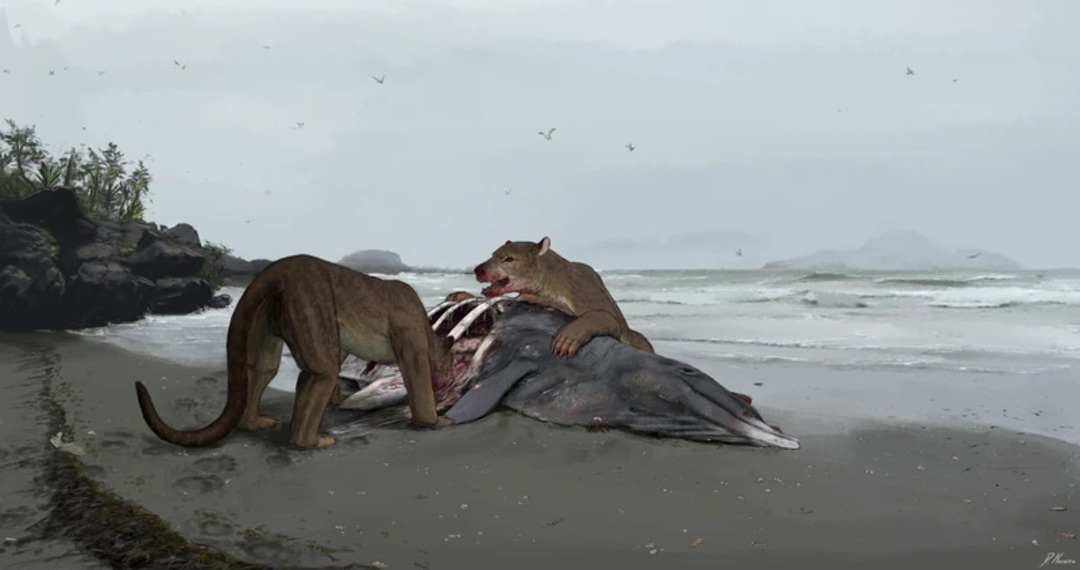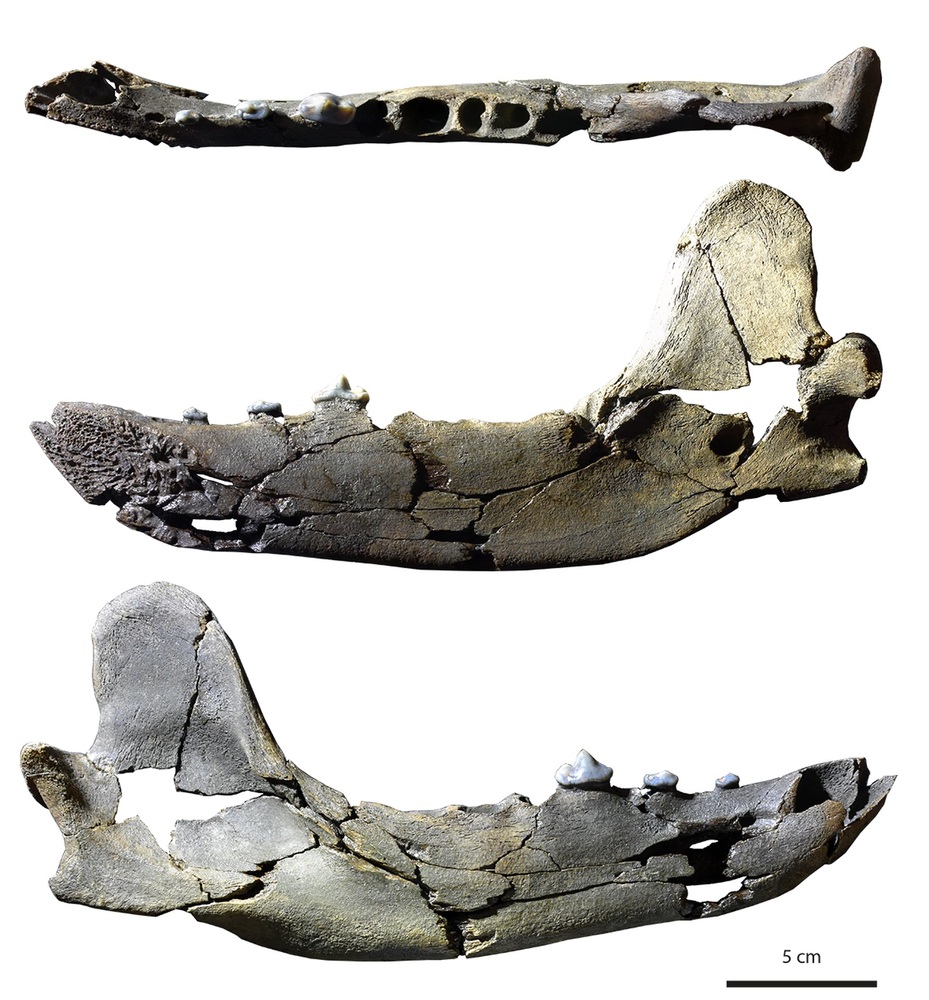-
Fossil of new species of predator called the 'bear dog' found in Europe

The National news reported that a new species of predator that lived between 7.5 million and 36 million years ago has been found in western Europe.
The "bear dog" was the size of a lion and lived in mountainous regions that are now the Pyrenees.
A jawbone was found in marine deposits between 12 million and 12.8 million years old that were examined in the small community of Sallespisse in the Pyrenees-Atlantiques region of south-western France.
An international team of palaeontologists, led by Dr Bastien Mennecart from the Natural History Museum Basel, concluded that the bone belonged to a group of carnivores known colloquially as “bear dogs”, which weighed about 320 kilograms and could crush bones with their teeth.

Dr Mennecart told The National the find was "a priceless peace of Earth history" owing to the rare nature of fossil finds in the region.
He said: "Climate changes associated to competition with newcomers may have been at the origin of their extinction.”
Humpback whales removed from Australia's list of threatened species
He said it was likely that the bear dogs would have been opportunistic, solitary animals similar to bears today, rather than running in packs like dogs. He said that they would have hunted large prey.
They would have also patrolled the shoreline looking for carrion such as dolphin.
The scientific name for the new species is Tartarocyon. This name comes from Tartaro, a powerful, one-eyed giant from Basque mythology. The legend of Tartaro is also known in Bearn, the region where the lower jawbone was found.
A report on the discovery was published in the journal PeerJ.
China and Africa participate in virtual forum to discuss protection of wild species
The scientists behind the report, Floreal Sole, Jean-Francois Lesport and Antoine Heitz, said that discoveries of "fossilised terrestrial vertebrates that lived on the northern edge of the Pyrenees 13 million to 11 million years ago are very rare".
They said: "The discovery and description of the lower jaw is even more significant. That is because it offers the opportunity to explore the development of European 'bear dogs' against the background of known environmental events at this time.”
Source: thenational
You May Also Like
Popular Posts
Caricature
BENEFIT Sponsors BuildHer...
- April 23, 2025
BENEFIT, the Kingdom’s innovator and leading company in Fintech and electronic financial transactions service, has sponsored the BuildHer CityHack 2025 Hackathon, a two-day event spearheaded by the College of Engineering and Technology at the Royal University for Women (RUW).
Aimed at secondary school students, the event brought together a distinguished group of academic professionals and technology experts to mentor and inspire young participants.
More than 100 high school students from across the Kingdom of Bahrain took part in the hackathon, which featured an intensive programme of training workshops and hands-on sessions. These activities were tailored to enhance participants’ critical thinking, collaborative problem-solving, and team-building capabilities, while also encouraging the development of practical and sustainable solutions to contemporary challenges using modern technological tools.
BENEFIT’s Chief Executive Mr. Abdulwahed AlJanahi, commented: “Our support for this educational hackathon reflects our long-term strategic vision to nurture the talents of emerging national youth and empower the next generation of accomplished female leaders in technology. By fostering creativity and innovation, we aim to contribute meaningfully to Bahrain’s comprehensive development goals and align with the aspirations outlined in the Kingdom’s Vision 2030—an ambition in which BENEFIT plays a central role.”
Professor Riyadh Yousif Hamzah, President of the Royal University for Women, commented: “This initiative reflects our commitment to advancing women in STEM fields. We're cultivating a generation of creative, solution-driven female leaders who will drive national development. Our partnership with BENEFIT exemplifies the powerful synergy between academia and private sector in supporting educational innovation.”
Hanan Abdulla Hasan, Senior Manager, PR & Communication at BENEFIT, said: “We are honoured to collaborate with RUW in supporting this remarkable technology-focused event. It highlights our commitment to social responsibility, and our ongoing efforts to enhance the digital and innovation capabilities of young Bahraini women and foster their ability to harness technological tools in the service of a smarter, more sustainable future.”
For his part, Dr. Humam ElAgha, Acting Dean of the College of Engineering and Technology at the University, said: “BuildHer CityHack 2025 embodies our hands-on approach to education. By tackling real-world problems through creative thinking and sustainable solutions, we're preparing women to thrive in the knowledge economy – a cornerstone of the University's vision.”
opinion
Report
ads
Newsletter
Subscribe to our mailing list to get the new updates!






















